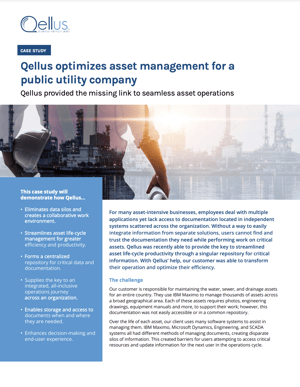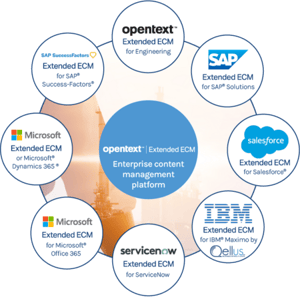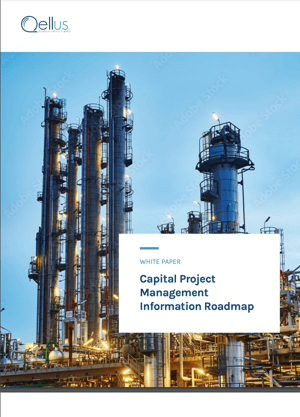
The Ultimate Guide to OpenText Extended ECM
Updated September, 16 2024 - 45 minutes to an hour read
Controlling unstructured information enterprise-wide is hard
OpenText Extended ECM (xECM) is an advanced Enterprise Content Management (ECM) platform that integrates content management capabilities directly into core business systems. This allows organizations to manage both structured and unstructured content—such as documents, emails, and multimedia—within the context of their day-to-day operations. By embedding content into familiar enterprise applications like SAP, Salesforce, and Microsoft 365, OpenText xECM helps streamline workflows, enhance collaboration, and ensure that critical information is accessible when and where it’s needed.
At its core, OpenText xECM goes beyond traditional ECM solutions by extending the reach of content management across departments, geographies, and enterprise applications. It provides a unified, 360-degree view of all content related to a specific business process, customer, or project. This eliminates the need for employees to switch between different systems or search through siloed repositories for critical information, saving time and improving productivity.
Core Functionalities of OpenText Extended ECM
1. Seamless Integration with Business Applications
One of the defining features of OpenText xECM is its ability to embed directly into popular enterprise applications. For example, users working in SAP or Microsoft Teams can access, edit, and store documents without leaving the interface they are already familiar with. This seamless integration allows content to be managed within the context of the business process, improving efficiency and minimizing the risk of errors.
2. Centralized Content Access and Management
xECM offers a centralized platform where all content, regardless of format or origin, is stored, managed, and made available. This centralization means that all relevant stakeholders can access up-to-date content, which is particularly valuable for cross-departmental collaboration. The platform supports various content types, including documents, images, videos, and even complex metadata, making it highly versatile.
3. Automated Governance and Compliance
OpenText xECM is designed with compliance in mind. The platform automatically categorizes, stores, and retains documents according to predefined governance rules, helping organizations meet regulatory requirements. This is especially important in industries like finance, healthcare, and manufacturing, where strict compliance standards are critical. The platform’s audit trails and retention schedules ensure that sensitive data is handled appropriately, reducing the risk of non-compliance.
4. Enhanced Collaboration
xECM promotes better collaboration by allowing multiple users to work on documents simultaneously, regardless of their location or department. Features like version control, real-time commenting, and task assignments help teams stay aligned and ensure that everyone is working with the most up-to-date information.
What Sets OpenText xECM Apart?
What differentiates OpenText Extended ECM from other ECM solutions is its deep integration into enterprise business processes. While traditional ECM platforms often act as standalone systems, xECM is designed to work hand-in-hand with the software applications that employees already use daily. This means content becomes part of the workflow, enabling businesses to make faster decisions, improve operational efficiency, and deliver better customer experiences.
Additionally, xECM’s robust compliance and governance features make it a top choice for industries with stringent regulatory requirements. The platform is built to scale, making it suitable for organizations of all sizes, from mid-market companies to global enterprises.
In summary, OpenText Extended ECM is more than just a content repository—it’s a strategic tool that integrates with key business applications, fosters collaboration, and ensures compliance, making it an indispensable asset for any organization looking to optimize their content management processes.
Our document management help regain control of unmanaged information and are the trusted advisor to Fortune 500 companiesOpenText Extended ECM (xECM) is an advanced platform designed to manage and integrate content into core business systems, allowing organizations to link structured data from enterprise applications with unstructured content. Its seamless integration into business processes makes it a powerful tool for managing content throughout its lifecycle—from creation to archiving—while promoting collaboration and ensuring compliance with industry regulations. Let’s explore the mechanics of how OpenText xECM works and how it optimizes content management.
1. Integration with Core Business Systems
For example, an employee working in SAP can view related documents—like invoices, purchase orders, or contracts—without having to leave the SAP environment. The system automatically associates relevant documents with business transactions, reducing the time spent searching for information. This makes content management an intuitive part of the workflow, increasing efficiency and minimizing disruptions.
Key Benefits of Integration:
- Unified User Experience: Content is accessed and managed in the same application where users perform daily tasks, reducing the learning curve.
- Contextual Content: Information is presented in the context of specific business processes, such as customer relationships, sales, or procurement, making it more relevant and actionable.
- Fewer Information Silos: By integrating content directly into business applications, xECM reduces information silos and fosters better cross-functional collaboration.
2. Content Lifecycle Management
OpenText xECM excels at managing the complete content lifecycle, from creation to archiving and eventual disposal. This lifecycle management is critical for organizations dealing with large volumes of information that must be maintained for legal or regulatory reasons.Lifecycle Stages:
- Creation: Content can originate from various sources, including scanned documents, emails, or digital files created within applications like Word or Excel. xECM stores and organizes these documents in a central repository, linking them to specific business objects like customer records, contracts, or purchase orders.
- Collaboration: Users across departments can access and collaborate on documents in real-time. For instance, different teams can work together on a contract, providing comments, making revisions, and keeping track of changes—all within a controlled, version-managed environment.
- Retention and Compliance: xECM’s robust governance features ensure that documents are stored according to predefined retention policies. This is particularly important for industries like healthcare, finance, and manufacturing, where compliance with regulations such as GDPR or HIPAA is critical.
- Archiving and Disposal: Once documents have reached the end of their lifecycle, xECM automates the archiving or disposal process according to the organization’s retention policies, reducing the risk of non-compliance or data breaches.
Key Feature – Retention Management:
Retention policies can be set at both the system and document level, allowing organizations to enforce rules based on document type, department, or regulatory requirement. This ensures that critical documents are kept for the required duration, while outdated or irrelevant content is systematically purged.
3. Metadata and Version Control
- Metadata Management: Metadata refers to data that describes other data—such as a document’s creation date, author, or relevant business object (e.g., customer ID, invoice number). xECM uses metadata to automatically classify documents, making them easier to find and manage. For example, when a sales contract is uploaded to the system, metadata such as customer name, contract value, and expiration date can be applied automatically. This allows users to quickly locate the document later by searching for any of these criteria.
- Version Control: xECM ensures that teams are always working on the most up-to-date version of a document. When a document is modified, a new version is created, and the previous versions are stored for reference. This version history is crucial for tracking changes, auditing processes, and ensuring accountability within an organization. For example, in the case of a legal contract, users can review who made changes, when those changes were made, and what the original document contained.
- Faster Search and Retrieval: Metadata allows users to find documents quickly, even in a large repository.
- Accurate Document History: Version control ensures that all changes are tracked and that previous versions are preserved, preventing errors or misunderstandings.
- Improved Collaboration: Multiple users can collaborate on the same document without the risk of overwriting each other’s work.
4. Automation and Workflow Management
OpenText xECM leverages automation to streamline content-related workflows, reducing manual intervention and minimizing errors. It can automate tasks like document categorization, approval processes, and archiving, saving time and improving accuracy.
For instance, when a contract is uploaded, xECM can automatically route it to the appropriate department for review and approval based on predefined business rules. Once approved, the contract is automatically categorized and stored in the relevant repository, with notifications sent to the appropriate stakeholders. This eliminates the need for manual processes, ensuring faster turnaround times and fewer administrative delays.
Conclusion
OpenText Extended ECM works by embedding content management into core business systems, allowing organizations to manage content within the context of their daily operations. Its ability to manage the entire content lifecycle, automate workflows, and provide robust version control makes it a powerful tool for businesses looking to streamline processes and enhance collaboration. By integrating structured and unstructured data, xECM ensures that employees have access to the information they need when they need it, improving efficiency, compliance, and decision-making. and their peers worldwide, bringing decades of experience and a vast network of OpenText connections.
OpenText Extended ECM (xECM) offers a range of powerful features that deliver significant benefits to businesses across industries. By integrating content management directly into core business systems like SAP, Salesforce, and Microsoft 365, OpenText xECM transforms how organizations manage information, leading to improved efficiency, enhanced collaboration, stronger compliance, and substantial cost savings. Below are the key benefits that enterprises can expect from adopting OpenText xECM.
1. Improved Efficiency and Productivity
One of the primary benefits of OpenText xECM is its ability to dramatically improve operational efficiency. By embedding content management into existing enterprise systems, xECM allows users to access critical documents and data directly from the applications they use every day. This eliminates the need to switch between multiple systems to find information, reducing time spent on manual tasks like searching for documents, managing email attachments, or re-entering data.
For instance, a financial services company using SAP with xECM integration can access client contracts, invoices, and communications directly from the SAP interface. This seamless integration reduces the time it takes to retrieve documents by up to 50%, allowing employees to focus on higher-value tasks.
Additionally, xECM’s automation capabilities further enhance efficiency. The platform automates routine content management tasks such as document categorization, approval workflows, and archiving. This automation reduces the risk of human error, ensures that business processes flow smoothly, and frees employees from manual administrative tasks. In fact, studies show that organizations using integrated ECM solutions like xECM can increase employee productivity by as much as 20%.
2. Enhanced Collaboration Across Departments
In today’s digital workplace, collaboration is essential for success, especially in large organizations where teams often work in silos. OpenText xECM breaks down these silos by providing a centralized platform where documents, records, and other content can be accessed and shared across departments. This unified approach to content management ensures that all stakeholders have access to the latest version of a document, enabling better teamwork and communication.
For example, in a global manufacturing company, different teams—such as engineering, procurement, and sales—can collaborate on product-related documents within xECM. When a new version of a product design or supplier contract is uploaded, all relevant team members receive notifications and can collaborate in real-time, providing comments or making necessary revisions. This real-time collaboration not only speeds up decision-making but also reduces the chance of miscommunication and delays.
The platform’s robust version control ensures that everyone is working with the most up-to-date documents, while its metadata tagging system makes it easy to find and share information quickly. As a result, teams across departments and regions can work more cohesively, fostering innovation and improving project outcomes.
3. Stronger Compliance and Information Governance
In highly regulated industries such as finance, healthcare, and manufacturing, ensuring compliance with industry standards and legal regulations is critical. OpenText xECM is designed with robust governance and compliance features that help organizations meet these requirements effortlessly. The platform automatically enforces document retention policies, categorizes content based on metadata, and creates audit trails for all actions performed on a document.
For instance, a pharmaceutical company using OpenText xECM can ensure that all research and development documents are properly categorized and stored according to FDA regulations. xECM’s automated compliance features minimize the risk of regulatory breaches, significantly reducing potential fines and penalties. Moreover, it ensures that during audits, all required documentation can be retrieved quickly and accurately, making the process more efficient.
According to AIIM (Association for Intelligent Information Management), companies that effectively manage compliance through ECM systems reduce legal risks by 50%, which highlights the tangible value of xECM’s governance capabilities.
4. Cost Savings and Optimized Resource Use
By streamlining content management and automating repetitive tasks, OpenText xECM delivers substantial cost savings to organizations. The elimination of manual document handling reduces administrative overhead, while automation improves efficiency and reduces the time and resources required to manage business processes.
For example, a mid-sized insurance company that uses xECM to automate document workflows and compliance checks can save up to 30% in operational costs. These savings come from reduced storage costs, minimized human errors, and lower labor expenses due to the automation of routine tasks.
Moreover, xECM’s centralized platform reduces the need for separate content management solutions across different departments, consolidating software licensing and IT maintenance costs. Organizations can also save on physical storage by digitizing documents and archiving them in xECM’s secure, cloud-based system, eliminating the need for large physical storage facilities and associated expenses.
Conclusion: A Strategic Advantage for Enterprises
OpenText Extended ECM delivers significant value by increasing operational efficiency, enhancing collaboration, ensuring compliance, and reducing costs. By integrating content management into core business systems, xECM transforms the way organizations handle information, helping them stay competitive in today’s fast-paced, data-driven environment. Whether you're a financial institution ensuring regulatory compliance or a manufacturing firm streamlining product documentation, OpenText xECM provides the tools you need to manage content effectively and drive business success.
Adopting xECM is not just about improving content management—it's about enabling your entire organization to work smarter, faster, and more collaboratively, resulting in long-term growth and profitability.
Implementing OpenText Extended ECM (xECM) is a strategic move that can greatly enhance how your organization manages content, collaborates across teams, and ensures compliance. However, to reap the full benefits of xECM, it’s essential to approach the deployment with a well-structured plan. This guide will share expert tips, outline steps for successful implementation, highlight common pitfalls to avoid, and provide strategic insights to help ensure a smooth transition. Following these best practices can help your organization leverage xECM to its full potential while differentiating your deployment process from competitors.
1. Start with a Clear Business Case and Objectives
- What are the main business challenges you are addressing with xECM?
- Which departments will benefit most from this integration, and how will it improve their processes?
- What KPIs will be used to measure the success of the implementation?
Clear objectives can include improving operational efficiency, enhancing collaboration, ensuring regulatory compliance, or reducing costs. For example, a company may want to reduce the time employees spend searching for documents by 40% or automate 60% of its document approval processes.
2. Engage Key Stakeholders Early
Successful implementation of OpenText xECM requires collaboration across the organization. Key stakeholders from departments such as IT, legal, operations, and compliance should be involved early in the process. Engaging these groups ensures that the platform will meet the needs of various teams and that they will be aligned with the goals of the deployment.
By involving different business units from the start, you can tailor the solution to address specific challenges each team faces, ensuring higher adoption rates and a smoother transition.
Tip for Success: Regularly communicate the benefits and progress of the project to key stakeholders through newsletters, meetings, and workshops. This helps maintain momentum and builds support for the changes.
3. Develop a Comprehensive Change Management Strategy
- Provide Training: Ensure that users understand how to use xECM within the context of their daily tasks. Create role-based training sessions and materials tailored to specific departments. Hands-on workshops, training videos, and knowledge bases can all help in this effort.
- Encourage Feedback: Open a feedback loop with employees so they can voice any concerns or difficulties they encounter with the new system. Adjust processes or training materials as necessary based on their input.
- Leadership Involvement: Engage top management to lead by example in using the new system, as their participation and support can influence the adoption rates across teams.
Common Pitfall: Failing to provide adequate training and communication can result in low user adoption. Even if the system is highly advanced, it’s of little use if employees are reluctant to embrace it.
4. Focus on Seamless Integration with Core Business Applications
- Identify Integration Points: Map out where xECM will interact with your other enterprise applications. For example, identify how invoices, contracts, or customer data will flow between SAP and xECM, and ensure that the integration is designed to support these specific use cases.
- Pilot Testing: Conduct pilot tests on key integrations before fully deploying the system. This allows you to address any technical issues and optimize the integration for performance and user experience.
At Qellus, we emphasize the importance of pre-configured integrations with key business applications, which accelerates deployment and minimizes downtime. Our expertise lies in ensuring that integrations are not only technically sound but also aligned with the business process goals.
5. Prioritize Data Migration and Information Governance
- Perform a Content Audit: Before migrating data, conduct an audit to identify which documents should be migrated, archived, or discarded. This ensures that you’re not moving redundant or outdated files to the new system.
- Create Data Mapping Plans: Ensure that all content is appropriately mapped to its corresponding location in xECM. Metadata is critical for classifying and retrieving documents, so be sure to carry over relevant metadata fields during migration.
- Establish Governance Policies: xECM provides robust governance and compliance features. Define and enforce content retention policies, document classification rules, and security measures to protect sensitive data and meet regulatory requirements.
At Qellus, our deep expertise in data governance helps enterprises establish a structured approach to managing their information, ensuring compliance with industry standards and legal requirements.
6. Leverage Automation for Workflow Efficiency
- Identify Key Workflows: Work with different departments to identify the document workflows that can be automated. For example, automating the contract approval process or the routing of financial documents to the correct department can lead to time savings and improved accountability.
- Configure Custom Workflows: Customize workflows to meet the specific needs of each department. For example, you might need different approval workflows for legal, finance, and HR documents.
By utilizing OpenText’s automation features, Qellus helps businesses improve productivity and consistency in document-related processes, ultimately reducing bottlenecks.
7. Monitor and Optimize Post-Deployment
- Analyze KPIs: Measure performance against the KPIs established during the planning phase. Are employees retrieving documents faster? Has workflow automation improved turnaround times?
- User Feedback: Continue to gather user feedback to ensure that the system is meeting their needs. This can inform adjustments in training, workflows, or system configurations.
- Ongoing Support: Provide ongoing support and regular updates to keep the system running efficiently and to take advantage of new features as they become available.
At Qellus, we offer ongoing support and optimization services to ensure that clients continue to benefit from their xECM investment long after the initial deployment.
Conclusion
Implementing OpenText Extended ECM requires a blend of technical and strategic planning. By following these best practices—focusing on clear objectives, seamless integration, data governance, and change management—you can ensure a successful deployment that maximizes efficiency, fosters collaboration, ensures compliance, and reduces costs. At Qellus, we differentiate ourselves by offering deep expertise in process optimization and governance, providing end-to-end support from planning to post-deployment. With a focus on helping businesses leverage the full potential of xECM, we enable organizations to drive long-term success with their content management strategy.

OpenText Extended ECM (xECM) provides a versatile content management platform that integrates seamlessly with enterprise systems across various industries, helping businesses streamline operations, enhance collaboration, and ensure regulatory compliance. This case study highlights how Qellus, an OpenText partner, helped optimize asset management for a public utility company by leveraging OpenText xECM, illustrating its value in real-world applications.
Optimizing Asset Management for a Public Utility Company
Case Study Overview
A large public utility company faced significant challenges managing its critical infrastructure assets, particularly with the maintenance and operation of its equipment spread across various locations. The company was managing a vast array of documentation related to asset maintenance, repair records, inspections, and compliance certifications. However, this documentation was often scattered across disparate systems, making it difficult for field workers and engineers to access the information they needed in a timely manner. This led to inefficiencies, delayed maintenance, and increased operational costs.
To solve these issues, the utility company partnered with Qellus to implement OpenText Extended ECM integrated with SAP, streamlining the management of their asset-related documentation and improving operational efficiency.
1. Streamlining Document Access and Maintenance Operations
Solution: By integrating OpenText xECM with SAP, Qellus helped the utility company centralize all asset-related documentation in one platform. This integration enabled:
- Seamless access to critical documents: Field workers could now retrieve maintenance records, inspection reports, and operational procedures directly from their mobile devices, allowing them to perform on-site maintenance more efficiently.
- Enhanced collaboration: Engineers, maintenance teams, and operations staff could collaborate in real time on asset management tasks, ensuring that the latest version of documentation was always available.
Outcome: The implementation led to a 30% reduction in the time required to locate and retrieve asset documentation, which directly improved maintenance response times and reduced equipment downtime.
2. Improving Regulatory Compliance
The public utility company operates in a highly regulated environment, with stringent requirements for safety inspections, environmental compliance, and reporting. Prior to deploying OpenText xECM, the company faced challenges ensuring that all compliance-related documentation, such as inspection certificates and regulatory approvals, were up-to-date and easily accessible during audits.
Solution: OpenText xECM allowed the company to automatically categorize, store, and manage compliance documents according to regulatory requirements. By integrating compliance workflows with SAP, the system ensured that documentation was always current, properly categorized, and stored with full audit trails for transparency.
Key Benefits:
- Automated compliance workflows: Regular inspections and compliance reports were automatically linked to the relevant asset documentation. Automated reminders ensured inspections were carried out on time, and non-compliance risks were minimized.
- Full audit visibility: Audit trails allowed the company to track who accessed or modified compliance documents, providing transparency during regulatory audits.
Outcome: The company saw a 40% improvement in compliance document management, reducing the risk of penalties for non-compliance and streamlining audit processes.
3. Enhancing Asset Lifecycle Management
Solution: By implementing OpenText xECM, integrated with SAP’s asset management modules, Qellus helped the company gain full visibility into the lifecycle of each asset. The system provided a single source of truth for asset-related information, including performance reports, maintenance schedules, and financial data. This allowed the company to:
- Optimize asset performance: Real-time access to asset data enabled more proactive maintenance and better decision-making regarding asset repairs or replacements.
- Improve forecasting and planning: With accurate, consolidated data on asset performance and maintenance history, the company was better equipped to plan future investments and budget for maintenance activities.
Outcome: The implementation resulted in a 25% reduction in asset downtime, thanks to more proactive maintenance and improved decision-making.
4. Reducing Operational Costs
Solution: With OpenText xECM’s seamless integration into SAP, Qellus helped the company automate many of its asset management workflows, reducing manual intervention and enabling more efficient use of resources.
- Automated document workflows: Maintenance workflows, such as approvals and reviews, were automated, reducing the administrative burden on staff and speeding up the process.
- Cost savings from reduced downtime: By enabling faster access to documents and improving maintenance operations, the company significantly reduced downtime, cutting repair costs.
Outcome: The company experienced a 15% reduction in operational costs related to asset management, resulting in significant long-term savings.
Conclusion: A Tailored Solution for Asset Management Success
This case study demonstrates how OpenText Extended ECM, combined with Qellus’ expertise, can transform asset management for utility companies and other industries facing similar challenges. By centralizing document management, automating compliance workflows, and improving asset lifecycle management, OpenText xECM helps organizations achieve operational efficiencies, reduce costs, and ensure regulatory compliance.
The success of this public utility company is a powerful example of how OpenText xECM can be applied to optimize asset management processes in any organization, regardless of industry. Whether it’s improving collaboration in manufacturing, streamlining compliance in financial services, or enhancing patient record management in healthcare, OpenText xECM is a flexible, powerful solution for organizations seeking to manage content and assets more effectively.
Adopting an enterprise content management (ECM) system like OpenText Extended ECM (xECM) offers numerous benefits, but it also presents certain challenges for organizations, especially during the initial transition phase. Understanding these challenges and knowing how to overcome them is critical for a successful deployment. This section outlines common challenges organizations face when adopting ECM solutions and provides practical strategies for addressing them. By navigating these obstacles, businesses can ensure a smoother integration and realize the full value of their investment.
1. Resistance to Change
Challenge: One of the most significant hurdles organizations face is resistance to change from employees. Many users are accustomed to existing systems or manual processes and may be reluctant to adopt new technology, fearing a steep learning curve or disruptions to their workflow.
Solution: The key to overcoming resistance is effective change management and user involvement. Start by:
- Educating users on the benefits: Clearly communicate how OpenText xECM will make their jobs easier by reducing time spent searching for documents, improving collaboration, and automating manual tasks.
- Providing comprehensive training: Offer hands-on training sessions tailored to different user groups. This ensures that employees feel confident in using the new system and understand how it integrates into their daily workflows.
- Engaging employees early: Involve key stakeholders from different departments early in the implementation process. Their feedback can help shape a solution that meets the needs of various teams, increasing buy-in across the organization.
2. Integration with Existing Systems
Challenge: Many organizations rely on a variety of software tools for their operations, such as ERP, CRM, and document management systems. Integrating OpenText xECM with these existing platforms can be complex, especially when dealing with legacy systems or custom software. Ensuring that data flows smoothly between systems is crucial for avoiding data silos and inefficiencies.
Solution: A well-planned integration strategy is essential to overcoming this challenge. Qellus, as an expert in xECM deployment, recommends:
- Conducting a thorough system assessment: Before implementation, assess all existing systems and determine how OpenText xECM can integrate with them. Understanding data flows, dependencies, and potential conflicts early on will help avoid integration issues later.
- Leveraging OpenText’s pre-built connectors: OpenText xECM offers pre-built connectors for systems like SAP, Salesforce, and Microsoft 365. These connectors can simplify the integration process by providing out-of-the-box functionality.
- Custom API development: For systems without pre-built connectors, custom API development may be required. Collaborating with experienced ECM consultants like Qellus ensures that integration is seamless and aligns with your business processes.
3. Ensuring Data Security and Compliance
Challenge: Managing sensitive information and ensuring compliance with data protection regulations is a top priority for many organizations, especially in industries such as healthcare, finance, and energy. Implementing an ECM system like OpenText xECM raises concerns about data security, user access control, and regulatory compliance.
Solution: OpenText xECM comes equipped with robust security features to address these concerns. Organizations should focus on:
- Setting up granular access controls: Implement role-based access controls (RBAC) to ensure that employees can only access the information relevant to their job functions. This reduces the risk of data breaches and unauthorized access to sensitive content.
- Ensuring encryption and secure storage: Use OpenText’s encryption capabilities to protect data both in transit and at rest. Ensuring that sensitive information is securely stored helps businesses meet regulatory requirements such as GDPR, HIPAA, and others.
- Automating compliance workflows: One of the key benefits of xECM is its ability to automate document retention and disposal policies. By setting up these automated workflows, organizations can ensure that records are kept for the appropriate time period and then securely disposed of, helping them maintain compliance with industry regulations.
4. Data Migration
Challenge: Migrating large volumes of data from legacy systems into OpenText xECM can be a daunting task. Organizations often have years’ worth of documents stored in different formats and systems, leading to concerns about data loss, duplication, or corruption during migration.
Solution: A phased approach to data migration is the best way to mitigate risks. Qellus recommends:
- Conducting a data audit: Before migration, perform a thorough audit of your existing data to identify what needs to be migrated, archived, or deleted. This ensures that only relevant, high-quality data is moved to the new system.
- Developing a migration strategy: Break the migration into phases, focusing on the most critical data first. This reduces the risk of errors and ensures that essential business operations continue uninterrupted.
- Testing extensively: Run multiple test migrations in a controlled environment before the actual migration. This helps identify potential issues and ensures that the migration process runs smoothly when fully implemented.
5. Managing Costs
Challenge: Implementing an ECM system like OpenText xECM represents a significant investment, and many organizations are concerned about the cost of deployment, including software licensing, integration, data migration, and training.
Solution: Managing costs effectively requires a clear understanding of the total cost of ownership (TCO) and the potential return on investment (ROI). Organizations can:
- Work with a phased deployment: By rolling out OpenText xECM in phases, starting with the most critical departments or processes, organizations can spread costs over time and demonstrate early wins that justify further investment.
- Leverage cloud options: OpenText xECM offers both on-premise and cloud-based deployment options. Choosing a cloud-based deployment can reduce upfront infrastructure costs and provide greater flexibility as the system scales.
- Calculate ROI early: Focus on the long-term savings that xECM offers, such as reduced storage costs, improved productivity, and better compliance management. Demonstrating ROI early in the project can help justify the initial costs to stakeholders.
Conclusion: Expertise to Navigate Challenges
Adopting OpenText Extended ECM offers tremendous value, but organizations must navigate certain challenges to ensure a smooth implementation. By working with experienced ECM consultants like Qellus, businesses can overcome these obstacles, from managing user adoption and integrating systems to ensuring data security and controlling costs. With the right strategies in place, organizations can unlock the full potential of OpenText xECM, driving efficiency, collaboration, and compliance across the enterprise.

At Qellus, we specialize in helping organizations regain control of their unstructured information—documents, drawings, and images—just like they do with their structured data. We offer the tools, expertise, and processes you need to manage this information enterprise-wide, creating harmony between your business-critical data and your content.
Your Challenges, Our Expertise
- Wasting time and money trying to stay compliant with regulations
- Lacking the ability to optimize business processes through automation
- Missing a single point of truth, making it difficult to trust or locate important documents
At Qellus, we understand these challenges. Our solutions integrate content into your business processes, ensuring that your unstructured data and structured data work in perfect harmony. With our help, you’ll regain control of your information, making it as reliable and valuable as the rest of your enterprise data.
Our Solutions
- SAP S/4HANA Transformation: Align content with your SAP processes for better visibility and control.
- Engineering Document Management: Ensure proper documentation of critical engineering processes.
- Enterprise Asset Management: Manage asset-related documentation effectively for smooth operations.
- Vendor Invoice Management: Streamline invoice processing with integrated content management.
Visit the solution >
Let’s Take Back Control—Together
Ready to get started? Here’s how we can help you regain control of your unstructured information in three simple steps:
1. Get to Know Each Other
Schedule a meeting with our team. We’ll listen to your challenges and share how our solutions can help.
2. Take Back Control
We’ll provide a clear, actionable plan to make your structured data and unstructured documents work together seamlessly.
3. Fuel Your Future
With proper content controls in place, you’ll have the foundation to drive future initiatives with confidence.
Why Qellus?
At Qellus, we bring decades of experience in integrated business processes, content management, and OpenText solutions. We’ve partnered with Fortune 500 companies, helping them solve their most complex content management challenges. When you work with us, you’ll get access to our vast network of OpenText and SAP experts, a complete vision for using content across your business, and a roadmap to future-proof your operations.
Let’s schedule a call and start planning how you can take back control of your unstructured information. Together, we’ll turn your content into a trusted asset that fuels your business.
We are passionate about integrated business processes

Testimonials
Oil and Gas company
Oil and Gas company

8 steps to optimize ERP and EAM processes
Accelerate revenue by increasing asset uptime using OpenText and Maximo

Capital Project Management Information Roadmap

Accelerate revenue by increasing asset uptime using OpenText and Maximo
Trusted by leading companies




















